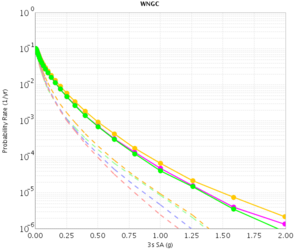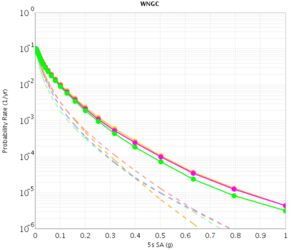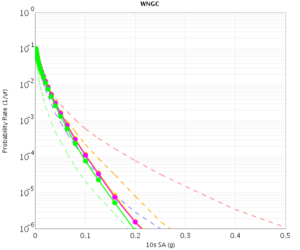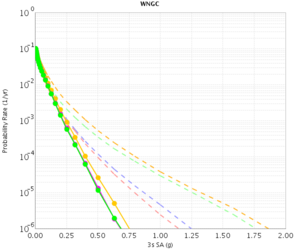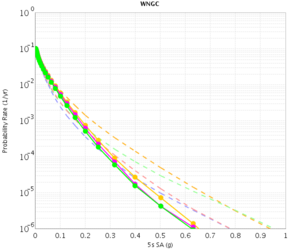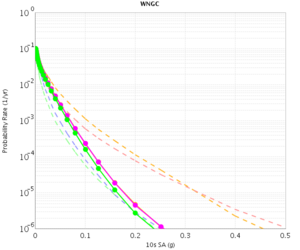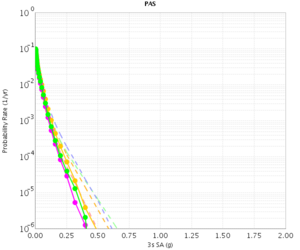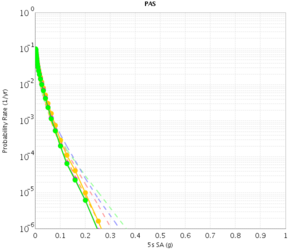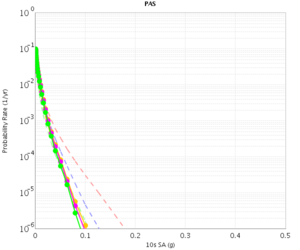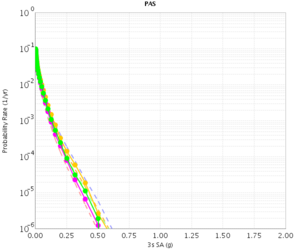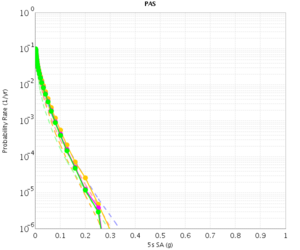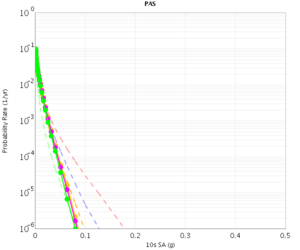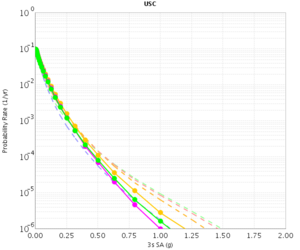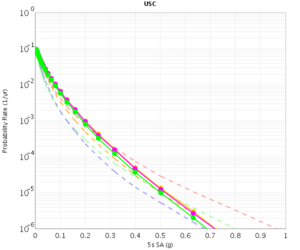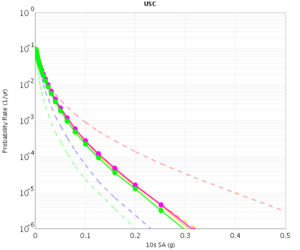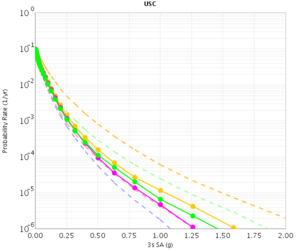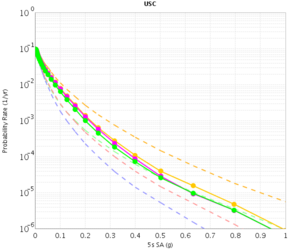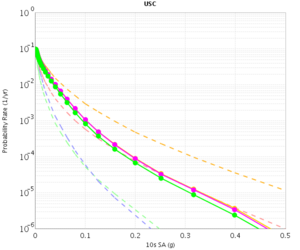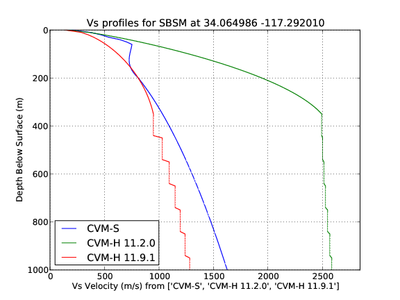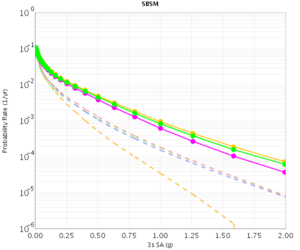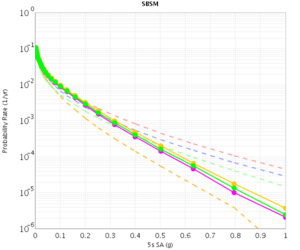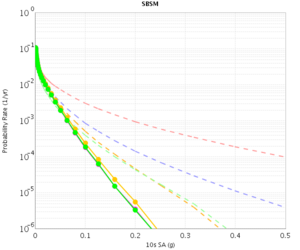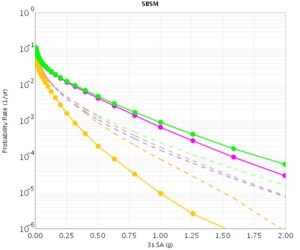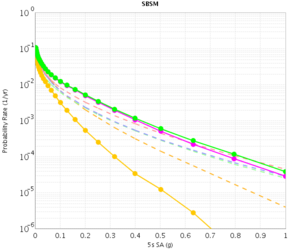Difference between revisions of "CyberShake Study 2.3"
| Line 127: | Line 127: | ||
== Papers and Presentations == | == Papers and Presentations == | ||
| − | [ | + | [http://scec.usc.edu/scecwiki/images/3/37/Study_2.3_Readiness_Review.ppt Readiness Review] |
== Related Entries == | == Related Entries == | ||
*[[Geoinformatics Project]] | *[[Geoinformatics Project]] | ||
*[[SEISM Project]] | *[[SEISM Project]] | ||
Revision as of 19:41, 4 April 2013
CyberShake Study 2.3 is a proposed study to calculate hazard curves under CyberShake 1.5 using CVM-S and CVM-H with the RWG V3.0.3 SGT code and AWP-ODC-SGT, and the Graves and Pitarka (2010) rupture variations. The goal is to calculate the same Southern California site list (286 sites) as for past CyberShake studies so we can produce comparison curves and maps, and understand the impact of the SGT codes and velocity models on the CyberShake seismic hazard.
Contents
Proposed sites
We are proposing to run 286 sites around Southern California. Those sites include 46 points of interest, 27 precarious rock sites, 23 broadband station locations, 43 20 km gridded sites, and 147 10 km gridded sites. All of them fall within the Southern California box except for Diablo Canyon and Pioneer Town. You can get a CSV file listing the sites here. A KML file listing the sites is available here.
Computational and Data Estimates
We are planning to use Blue Waters, Stampede, and Kraken for this calculation. We plan to calculate 286 sets of 2-component SGTs for each of RWG CVM-S, RWG CVM-H, AWP CVM-S, AWP CVM-H for a total of 1144 sets of SGTs.
We estimate the following requirements for each system. Data estimates are for generated data we may want to keep (SGTs, seismograms, PSA).
Blue Waters
Use for SGT calculations
572 sets of AWP SGTs x 5000 SUs/set = 2.9M SUs 572 sets of RWG SGTs x 5500 SUs/set = 3.2M SUs Total: 6.1M SUs 1144 sets of SGTs x 40 GB/set = 44.7 TB
Stampede
Use for RWG post-processing and half of AWP
858 sites x 900 SUs/site = 850k SUs 858 sites x 11.6 GB/site = 9.7 TB output data (seismograms, spectral acceleration)
Kraken
Use for half of AWP post-processing
286 sites x 5500 SUs/site = 1.6M SUs 286 sites x 11.6 GB/site = 3.2 TB output data (seismograms, spectral acceleration)
SCEC storage
1144 sites x 11.6 GB/site = 13.0 TB stored output data 1144 sites x 4.9 GB/site = 5.5 TB workflow logs
Verification
Before beginning Study 2.3 production runs, we first generated hazard curves in all 4 conditions (RWG CVM-S, RWG CVM-H, AWP CVM-S, AWP CVM-H) for 4 test sites, WNGC, PAS, USC, and SBSM. Below are hazard curves comparing these results, along with the previous version of RWG (V3).
WNGC
| 3s | 5s | 10s | |
|---|---|---|---|
| CVM-S | |||
| CVM-H |
PAS
| 3s | 5s | 10s | |
|---|---|---|---|
| CVM-S | |||
| CVM-H |
USC
| 3s | 5s | 10s | |
|---|---|---|---|
| CVM-S | |||
| CVM-H |
SBSM
The CVM-H curves are quite different for RWG V3.0.3 and RWG V3. This is because the V3 curves were made with CVM-H 11.2, whereas the RWG V3.0.3 (and AWP) curves were made with CVM-H 11.9. The update in CVM-H included the addition of the San Bernardino basin, which makes a big impact. You can see this on a velocity profile at SBSM:
| 3s | 5s | 10s | |
|---|---|---|---|
| CVM-S | |||
| CVM-H |

